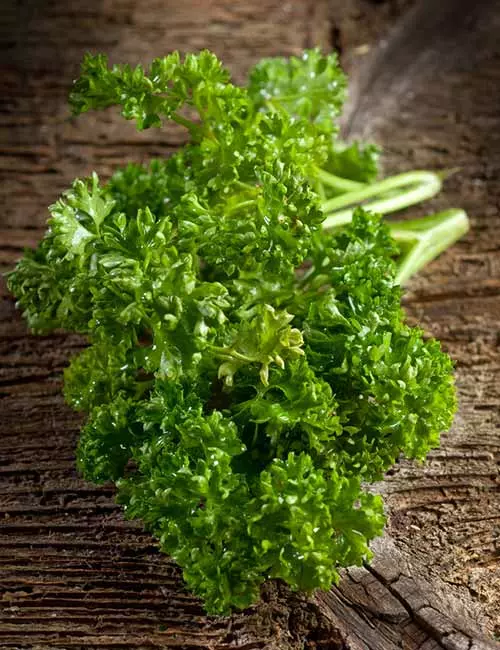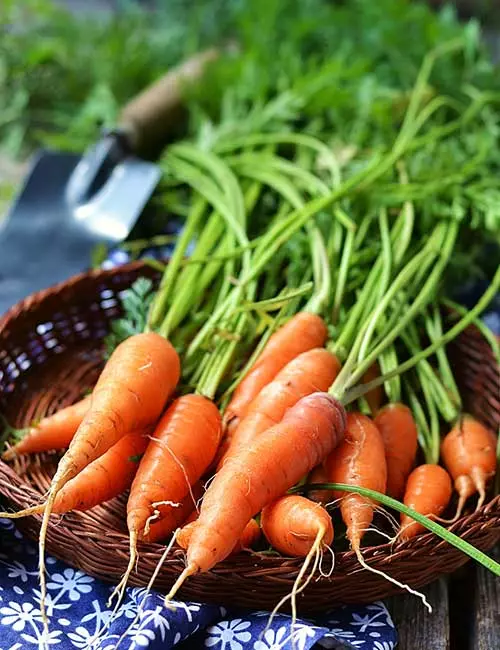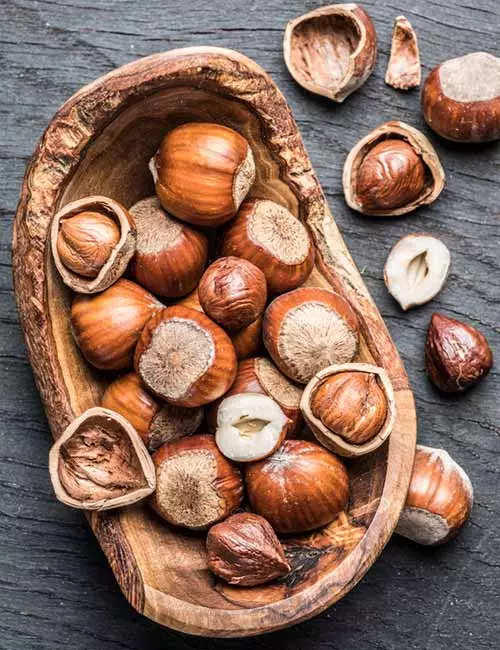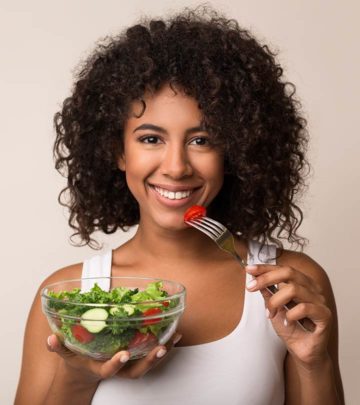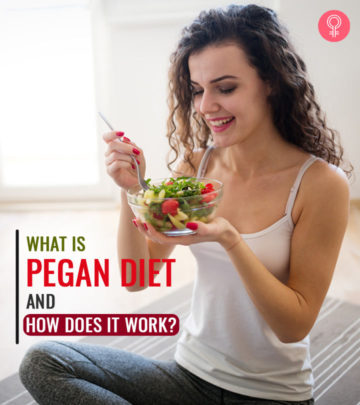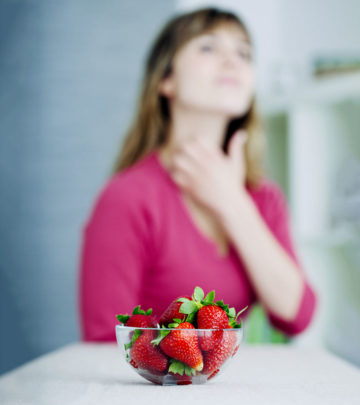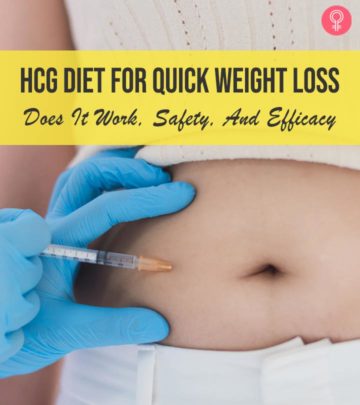Alkaline Diet – Hoax Or The Next Big Thing After Keto?

Image: Shutterstock
If there’s one vegan or vegetarian diet that is as beneficial as the keto diet – it’s the alkaline diet. The founding principle of the alkaline diet is based on the 100-year-old acid-ash hypothesis. This hypothesis says that after digestion, foods either leave an acidic or alkaline residue.
An acidic pH deteriorates your health. But an alkaline pH boosts your immunity and protects your health. So, switching to an alkaline diet helps reduce problems like acidity, bloating, brittle bones, fatigue, etc. But does this claim have any scientific basis? Or is it just another fad?
Read on to get complete information on the alkaline diet – how it works, is it really effective, alkaline foods list, benefits, and does it cure cancer. Most importantly, find out if this diet is for you. Let’s begin!
Highlights Of The Article
- What Is The Alkaline Diet?
- How Does The Alkaline Diet Work?
- PRAL Scale Score Of Foods
- What Really Happens When Your Body Is Too Acidic?
- Symptoms That Your Body Has An Acidic pH
- 21 Alkaline Foods You Must Include In Your Diet
- Other Alkaline Foods
- Foods To Avoid Or Consume In Limited Amounts
- Alkaline Diet Vs. Keto Diet
- Alkaline Foods Benefits
- Can The Alkaline Diet Fight Cancer?
- Is The Alkaline Diet For You?
What Is The Alkaline Diet?
The alkaline diet (or alkaline ash diet) is a clean eating approach that helps switch the body from an acidic to an alkaline pH. You will consume a lot of fruits and veggies that will help increase the pH of the body.
The proponents of this diet believe that the alkaline pH of the body helps to take care of a number of problems like joint pain, muscle fatigue, digestive issues, weight gain, etc. If that’s true, how does it really work? Let’s find out.
How Does The Alkaline Diet Work?
The alkaline diet works on the simple principle of pH of the body and metabolic residue of foods. Let me explain.
pH is the measure of acidity or alkalinity of a solution. And the pH scale ranges from 0-14. The mid-point, which is 7, is “neutral.” The pH of water is 7. Any pH value below 7 is “acidic,” and a pH value above 7 is “alkaline.”
The pH value of blood is alkaline (7.35), and that of the stomach is acidic (1.5-3.5).
Your body’s pH depends on the foods you consume. Because foods also have pH values. Foods with acidic pH cause inflammation and stress, resulting in weak immunity, increased fatigue, difficulty in losing weight, and a hundred other problems (check the symptoms section).
But, you must also know that the pH value of foods is not measured by their physical property but by the metabolic residue (just like burnt leaves leave a residue in the form of ash) they leave behind. Metabolic ash residue can either be acidic, neutral, or alkaline.
For example, the physical pH of lemon is acidic, but after metabolism, it leaves an alkaline residue. That’s the reason lemon water with a pinch of salt is a common home remedy for bloating and acidity. Makes sense, right?
Most vegetables and fruits leave an alkaline residue post metabolism. And the alkaline diet encourages dieters to consume veggies, fruits, and other foods that leave an alkaline metabolic residue. As a result, the pH value of your body will increase and get to a desirable alkaline pH.
But, how do you know if a food will leave acidic or alkaline metabolic residue? Through the PRAL scale. Let’s quickly find out what’s it all about.
PRAL Scale Score Of Foods
PRAL or Potential Renal Acid Load is the measure of the estimated amount of alkalinity and acidity of a food post metabolism (1). The foods are given negative (alkaline), positive (acidic), and neutral values.
Based on the amount of protein, mineral, and phosphorus left behind post metabolism, your body will either be acidic or alkaline. Protein and phosphoric acid form phosphoric acid and sulfuric acid post metabolism. So, your body tends to be more acidic.
On the other hand, when fruits, veggies, and other alkaline metabolic residue foods are metabolized, they leave behind minerals like calcium, potassium, and magnesium. Here is a list of foods with PRAL scores.
So, you’ve seen me stating over and over again that acidic pH in the body can wreak havoc. But why? Here’s what you’ve got to know.
What Really Happens When Your Body Is Too Acidic?
Here’s what happens when you consume too many foods that leave an acidic metabolic residue.
- When your body becomes too acidic, your bones start to become weak and brittle. And that’s because foods that leave an acidic metabolic residue are lower in nutrients that are required to strengthen and maintain bones.
- When you consume acidic foods, you may suffer from renal failure. And that accelerates skeletal muscle loss.
- Metabolic acidosis in children has also shown to affect the growth hormone that results in short stature (2).
- n acidic environment is perfect for cancer cells to thrive while an alkaline environment prevents cancer cell growth (3).
There are other symptoms that indicate that your body is too acidic. Take a look at the list below.
Symptoms That Your Body Has An Acidic pH
- Depression and anxiety
- Joint pain
- Muscle weakness
- Bloating
- Indigestion
- Acne
- Headache
- Frequent cold and cough
- Confusion and brain fog
- Fatigue and low energy
Too much acidity in the body is neutralized by bicarbonates present in the body. But if you are constantly stressed out or do a strenuous workout, your bicarbonate reserves might get depleted soon. And that’s why you need to include foods that balance the pH of your body. Here’s the alkaline diet foods list.
21 Alkaline Foods You Must Include In Your Diet
1. Dried Figs – PRAL Score: -18.1
Figs are good for your health. They are known to help reduce inflammation, gastric problems, and cancer (4). The sweet dried figs are so delectable.
The yummy combination of soft pulp and small crunchy seeds complement perfectly a simple vanilla ice cream or Greek yogurt. Top it with honey or hazelnut syrup.
2. Beet Greens – PRAL Score: -16.7
Beet greens are a storehouse of antioxidants. Scientists have found that the antioxidants in beet greens can reduce lipid peroxidation and oxidative damage significantly, improve the body’s defense system, and lower cholesterol levels (5), (6).
Add beet greens to salads and toss with other alkaline foods and a yummy dressing.
3. Spinach – PRAL Score: -14.0
Spinach is one of the healthiest foods (remember Popeye?). It is loaded with dietary fiber and antioxidants. Spinach helps scavenge the harmful free oxygen radicals, improves metabolism, induces secretion of satiety hormones, lowers lipid levels, and has anticancer properties (7).
Having a cup of spinach every two days can improve your health tenfold It is important to note thatspinach has high levels of oxalates (oxalic acid), high enough to affect certain health conditions. Your body is unable to absorb calcium from foods that are high in oxalates. For people with kidney stones, low amount of calcium in their diet will increase the risk of calcium oxalate kidney stones. Some evidence also shows that people with digestive orders like leaky gut or irritable bowel syndrome may also be susceptible to experiencing worsened symptoms when eating foods with high levels of oxalates, and some experts recommend that patients with inflammatory conditions like cystic fibrosis, thyroid disease, asthma, arthritis, or fibromyalgia should not eat high levels of foods high in oxalates due to the build-up of oxalates in bodily tissues. It may be best for these groups of people to opt for other leafy greens in their diet that contain less oxalates such as romaine lettuce, Swiss chard, and kale.
4. Parsley – PRAL Score: -12.0
Parsley is the queen of herbs. It not only adds flavor and color to the food but also offers many health benefits. The bioactive phenolic compounds and flavonoids like apiin, apigenin, 6”-Acetylapiin, myristicin, and apol are responsible for parsley’s anti-inflammatory, antiseptic, antidiabetic, laxative, gastroprotective, and antihypertensive properties (8).
Add parsley to your salad, sandwich, or soups or use it as garnish for a glass of alkaline fruit juice.
5. Kale – PRAL Score: -8.3
Kale belongs to the cruciferous vegetable family. And like many other crucifers (like broccoli and cauliflower), kale is loaded with antioxidants and has a glucose-lowering property (9).
Add kale to your salads, smoothies, and green juice to have a punch of antioxidants and improve your health super quick.
6. Swiss Chard – PRAL Score: -8.1
Swiss chard is another green leafy vegetable that is loaded with antioxidants. It has glucose- and blood pressure-lowering properties. Flavonoids like apigenin, vitexin, vitexin-2-O-rhamnoside, and vitexin-2-O-xyloside have also shown anticancer properties (10).
Add them to soups or salads (with a hit of English mustard) or make fritters to have a delicious and healthy meal.
7. Bananas – PRAL Score: -6.9
A banana is a total yes when it comes to improving your health. This nutrient-dense tropical fruit is rich in dietary fiber, potassium, carotenoids, phenolics, phytosterols, and amines that help reduce the risk of various chronic degenerative diseases (11). Have a banana before your workout or in the morning along with breakfast as it will provide energy (12).
Make banana shakes, protein smoothies, banana and berries oatmeal, or banana pancakes.
8. Sweet Potato – PRAL Score: -5.6
Sweet potatoes are so yummy! And they are healthy too. They contain natural health-promoting compounds like beta-carotene and antioxidants. Consuming sweet potatoes at least two to three times a week will help protect you from diabetes, obesity, oxidative stress, quick aging, cancer, and lung disorders (13).
Roast a sweet potato with other veggies and a protein source to have a great lunch or dinner. You can also make baked sweet potato wedges. Spice it up with some olive oil, herbs, salt, and pepper.
9. Celery – PRAL Score: -5.2
Celery is popularly known as a negative calorie food. And that’s because the high dietary fiber content of celery makes it tough for the digestive system to break down and metabolize it. So, the body needs extra calories to burn celery. Celery is also a powerful antioxidant (14).
Have celery and vinegar as a healthy snack or add it to soups and salads.
10. Carrots – PRAL Score: -4.9
Carrots are loaded with beta-carotene, a strong antioxidant. Consuming carrots two to three times a week may help protect from leukemia, decrease lipid peroxidation, and prevent DNA damage (15), (16), (17).
Add carrots to soups or stews or juice it.
11. Kiwi – PRAL Score: -4.1
According to a paper published in the Canadian Journal of Physiology and Pharmacology, “Kiwifruit are unequalled, compared with other commonly consumed fruit, for their nutrient density, health benefits, and consumer appeal.” This exotic fruit has cholesterol lowering, triglyceride lowering, laxative, digestion supportive, blood pressure lowering, and antioxidant properties (18).
Consume kiwi with the peel if you are on a weight loss mission. Add it to fruit salads, salads, juices, and smoothies. Avoid it if you are allergic to it.
12. Cauliflower – PRAL Score: -4.0
Cauliflower is a cruciferous vegetable that is a good source of antioxidants, minerals, and other beneficial phytochemicals. It may help lower the risk of breast, liver, stomach, colon, small intestine, esophagus, and lung cancer (19).
Consume blanched or stir-fried cauliflower in salads, soups, dips, and/or as cauliflower rice.
13. Cherries – PRAL Score: -3.6
The delicious and nutritious cherries are rich in quercetin, anthocyanins, potassium, melatonin, vitamin C, carotenoids, and dietary fiber. Consuming a medium cup of cherries two to three times a week may help protect from cancer, inflammation, diabetes, Alzheimer’s, and cardiovascular disease (20).
Consume cherries as it is or add them to juices, oatmeal bowl, and smoothies.
14. French Beans – PRAL Score: -3.1
French beans or green beans are a great source of various nutrients. They are loaded with fiber and vitamins K, A, and C. French beans help regulate blood pressure, maintain body fluids, slow down aging, scavenge harmful free oxygen radicals, and may decrease the risk of cardiovascular disease.
Add blanched French beans to stir-fries, soups, and salads.
15. Pears – PRAL Score: -2.9
Sweet, watery, and granular, pears are high fiber fruits that have many health benefits. They are also a storehouse of antioxidants and regulate alcohol metabolism, lower plasma lipid levels, and protect against ulcers (21).
Eat a pear as it is or add it to salads, juices, smoothies, or desserts.
16. Hazelnuts – PRAL Score: -2.8
Hazelnuts are rich in healthy fats and great for lowering harmful LDL cholesterol, controlling body weight, and protecting your heart from diseases (22).
Snack on a handful of hazelnuts or add them to desserts.
17. Pineapple – PRAL Score: -2.7
Pineapples are fibrous, sweet, and brightly colored. They are loaded with bromelain, a digestive enzyme that helps in the treatment of angina, sinusitis, surgical trauma, and bronchitis (23).
Have a medium bowl of pineapple with lime juice and black pepper. Add it to salads and pizzas to give your meal a Hawaiian twist.
18. Zucchini – PRAL Score: -2.6
Zucchini belongs to the cucumber family. The main bioactive compounds found in zucchini are zeaxanthin, lutein, beta-carotene, and dehydroascorbic acid. Scientists have found that zucchini may halt cancer cell proliferation and prevent oxidative damage (24).
Consume blanched zucchini with salads and kebabs.
19. Strawberries – PRAL Score: -2.2
Apart from being one of the most delicious berries (and the most photogenic!), strawberries are a good source of vitamin C, folic acid, and other phytochemicals that help lower blood glucose, lipid levels, inflammation, stress, and hypertension (25).
Consume a medium bowl of strawberries as it is or with dark chocolate or vanilla ice cream. Or add them to your breakfast bowl or smoothies.
20. Apple – PRAL Score: -2.2
An apple a day keeps the doctor away. True that! Apples are loaded with catechin, chlorogenic acid, and phloridzin (26). They may help protect you from cardiovascular diseases, Alzheimer’s, asthma, and cancer (27).
Have an apple, add it to your breakfast bowl or smoothies, juice it, or make a delicious Waldorf salad.
21. Watermelon – PRAL Score: -1.9
Watermelon is a dietary fiber-rich, high water content, and antioxidant-rich fruit. Lycopene, the main bioactive compound, has been found to help reduce the risk of cancer, diabetes, cardiovascular disorders, and macular diseases (28).
Consume a small bowl of watermelon as a snack, add it to your fruit salad or juice it.
These are alkaline foods that you may consume. But there’s more to the list. Here are other alkaline foods that you may include in your diet.
Other Alkaline Foods
- Apple juice
- Beetroot juice
- Cocoa
- Espresso
- Orange juice
- Red wine
- White wine
- Apricots
- Blackcurrant
- Lemon
- Mango
- Peach
- Eggplant
- Tomato
- Mushroom
- Soybeans
- Soy milk
- Chives
- Lettuce
- Leek
- Garlic
- Fennel
- Kohlrabi
- Marmalade
- Wine vinegar
- Apple vinegar
- Brown sugar
- Whey
- Raisins
- Grapefruit
- Grapes
- Hazelnuts
Here’s a list of foods you must avoid or limit consumption of as they leave acidic residue post metabolism.
Foods To Avoid Or Consume In Limited Amounts
- Coca-Cola: PRAL Score -0.4
- Bitter chocolate: PRAL Score 0.4
- Buttermilk: PRAL Score 0.5
- Butter: PRAL Score 0.6
- Ice cream: PRAL Score 0.6
- Beer: PRAL Score 0.9
- Curd: PRAL Score 0.9
- Egg white: PRAL Score 1.1
- Cream: PRAL Score 1.2
- Fresh sour cream: PRAL Score 1.2
- Peas: PRAL Score 1.2
- Wheat bread: PRAL Score 1.8
- White rice: PRAL Score 1.7
- Whole milk: PRAL Score 1.5
- Lentils: PRAL Score 3.5
- Almonds: PRAL Score 4.3
- Barley: PRAL Score 5.0
- Rusk: PRAL Score 5.9
- Cornflakes: PRAL Score 6.0
- Macaroni: PRAL Score 6.1
- Noodles: PRAL Score 6.4
- Walnut: PRAL Score 6.8
- Spaghetti: PRAL Score 7.3
- Carp: PRAL Score 7.9
- Shrimps: PRAL Score 7.6
- Lamb: PRAL Score 7.6
- Lean beef: PRAL Score 7.8
- Lean pork: PRAL Score 7.9
- Peanuts: PRAL Score 8.3
- Sausage: PRAL Score 8.3
- Lean duck: PRAL Score 8.4
- Pistachio: PRAL Score 8.5
- Chicken: PRAL Score 8.7
- Salmon: PRAL Score 9.4
- Turkey: PRAL Score 9.9
- Trout: PRAL Score 10.8
- Salami: PRAL Score 11.6
- Mussels: PRAL Score 15.3
- Tiger prawn: PRAL Score 18.2
- Rabbit: PRAL Score 19.0
- Hard cheese: PRAL Score 19.2
- Parmesan: PRAL Score 34.2
So, you see, a lot of foods that most of us consume daily are on the acidic side. In general, it is a good idea to avoid consuming processed foods, unlimited amounts of alcohol, and frozen foods. But if you decide to go on an alkaline diet, it is best that you avoid all the foods mentioned in the “foods to avoid” list.
I mentioned at the beginning of our conversation that the alkaline diet is perhaps as beneficial as the keto diet. How? Let’s find out.
Alkaline Diet Vs. Keto Diet
The keto diet is the most popular diet of the decade. And many dieters have achieved great results by following it. But keto is also not the go-to diet for vegans and vegetarians and people who suffer from acidity, bloating, kidney stones, and gout.
The two main components of the keto diet are fats and protein. This means you will be consuming a lot of animal products (meat, sausage, fish, butter, cheese, and mayonnaise) and plant sources of protein (lentils, soybean, and tofu). And though these foods are healthy, they are a strict no-no for people who regularly suffer from gut issues, joint pain, inflammation, and acne.
The alkaline diet has the capacity to reduce acidity in the body. And it is vegan and vegetarian-friendly.
So, if you think that keto is not your cup of tea, but you do need to follow a diet that will help with your bloating issues, skin problems, and fatigue, the alkaline diet is the best.
Let me summarize the benefits of alkaline foods/diet below.
Alkaline Foods Benefits
- Help reduce bloating
- Improve and support digestion
- Aid weight loss
- Reduce inflammation
- Reduce muscle fatigue
- May help reduce acne
- May help improve immunity
Now, the biggest question that remains unanswered is, can the alkaline diet help fight cancer? Let’s find out.
Can The Alkaline Diet Fight Cancer?
No, there is no direct evidence that going on an alkaline diet can help fight cancer.
All the research done on cancer cells is in lab settings. Also, the body’s acid-base balance is determined not only by the diet. So, do not go on this diet assuming that it will protect/prevent/fight cancer.
Also, maintaining optimum pH balance is the best way to be healthy. So, should you follow the alkaline diet at all?
Is The Alkaline Diet For You?
Yes, it is if you are a junk food addict and regularly suffer from gut and skin issues. But if you are healthy and fit while following your current diet, continue being on it as a healthy diet with balanced nutritionis important. Remember, you must take your doctor’s opinion before trying this diet.
Conclusion
The alkaline diet has many health benefits. And, for sure, you will see great results if you follow it. It will not only improve your lifestyle but also lessen stress and anxiety. Though the alkaline diet doesn’t require you to workout, I recommend that you do at least three hours of yoga/tai chi/swimming/running/dancing (or any other type of workout) per week. Your body and mind will reconnect, and this, in turn, will improve your mental and physical strength. Take your doctor’s advice today and be the better you. Take care!
References
- “Dietary potential renal acid load and renal net acid excretion in healthy, free-living children and adolescents” The American Journal of Clinical Nutrition, Oxford Academic.
- “The Alkaline Diet: Is There Evidence That an Alkaline pH Diet Benefits Health?” Journal of environmental and public health, US National Library of Medicine.
- “The chemistry, physiology and pathology of pH in cancer”Philosophical transactions of the Royal Society of London. Series B, Biological sciences, US National Library of Medicine.
- “Ficus carica L. (Moraceae): Phytochemistry, Traditional Uses and Biological Activities”Evidence-based complementary and alternative medicine : eCAM, US National Library of Medicine.
- “Red beet (Beta vulgaris L.) leaf supplementation improves antioxidant status in C57BL/6J mice fed high fat high cholesterol diet”Nutrition research and practice, US National Library of Medicine.
- “Beet Stalks and Leaves (Beta vulgarisL.) Protect Against High-Fat Diet-Induced Oxidative Damage in the Liver in Mice” Nutrients, MDPI.
- “Functional properties of spinach (Spinacia oleracea L.) phytochemicals and bioactives.”Food & function, US National Library of Medicine.
- “Parsley: a review of ethnopharmacology, phytochemistry and biological activities.”Journal of traditional Chinese medicine = Chung i tsa chih ying wen pan / sponsored by All-China Association of Traditional Chinese Medicine, Academy of Traditional Chinese Medicine, US National Library of Medicine.
- “Intake of kale suppresses postprandial increases in plasma glucose: A randomized, double-blind, placebo-controlled, crossover study” Biomedical reports, US National Library of Medicine.
- “Nutritional and functional potential of Beta vulgaris cicla and rubra.”Fitoterapia, US National Library of Medicine.
- “Bioactive compounds in banana and their associated health benefits – A review.”Food chemistry, US National Library of Medicine.
- “Bananas as an Energy Source during Exercise: A Metabolomics Approach” PLOS One, US National Library of Medicine.
- “Chemical constituents and health effects of sweet potato.”Food research international, US National Library of Medicine.
- “A Review of the Antioxidant Activity of Celery (Apium graveolens L)” Journal of evidence-based complementary & alternative medicine, US National Library of Medicine.
- “Effects of bioactive compounds from carrots (Daucus carota L.), polyacetylenes, beta-carotene and lutein on human lymphoid leukaemia cells.”Anti-cancer agents in medicinal chemistry, US National Library of Medicine.
- “Drinking carrot juice increases total antioxidant status and decreases lipid peroxidation in adults.”Nutrition journal, US National Library of Medicine.
- “The effect of carrot juice, β-carotene supplementation on lymphocyte DNA damage, erythrocyte antioxidant enzymes and plasma lipid profiles in Korean smoker” Nutrition research and practice, US National Library of Medicine.
- “Kiwifruit: our daily prescription for health.” Canadian journal of physiology and pharmacology, US National Library of Medicine.
- “Functional foods and their role in cancer prevention and health promotion: a comprehensive review” American journal of cancer research, US National Library of Medicine.
- “Cherries and health: a review.” Critical reviews in food science and nutrition, US National Library of Medicine.
- “Systematic Review of Pears and Health” Nutrition Today, US National Library of Medicine.
- “Effects of Hazelnut Consumption on Blood Lipids and Body Weight: A Systematic Review and Bayesian Meta-Analysis” Nutrients, US National Library of Medicine.
- “Properties and Therapeutic Application of Bromelain: A Review”Biotechnology research international, US National Library of Medicine.
- “Role of Zucchini and Its Distinctive Components in the Modulation of Degenerative Processes: Genotoxicity, Anti-Genotoxicity, Cytotoxicity and Apoptotic Effects”Nutrients, US National Library of Medicine.
- “Strawberry as a functional food: an evidence-based review.” Critical reviews in food science and nutrition, US National Library of Medicine.
- “Apple phytochemicals and their health benefits” Nutrition journal, US National Library of Medicine.
- “A Comprehensive Review of Apples and Apple Components and Their Relationship to Human Health”Advances in nutrition, US National Library of Medicine.
- “Watermelon lycopene and allied health claims”EXCLI journal, US National Library of Medicine.

Community Experiences
Join the conversation and become a part of our vibrant community! Share your stories, experiences, and insights to connect with like-minded individuals.
Read full bio of Anne Anyia




